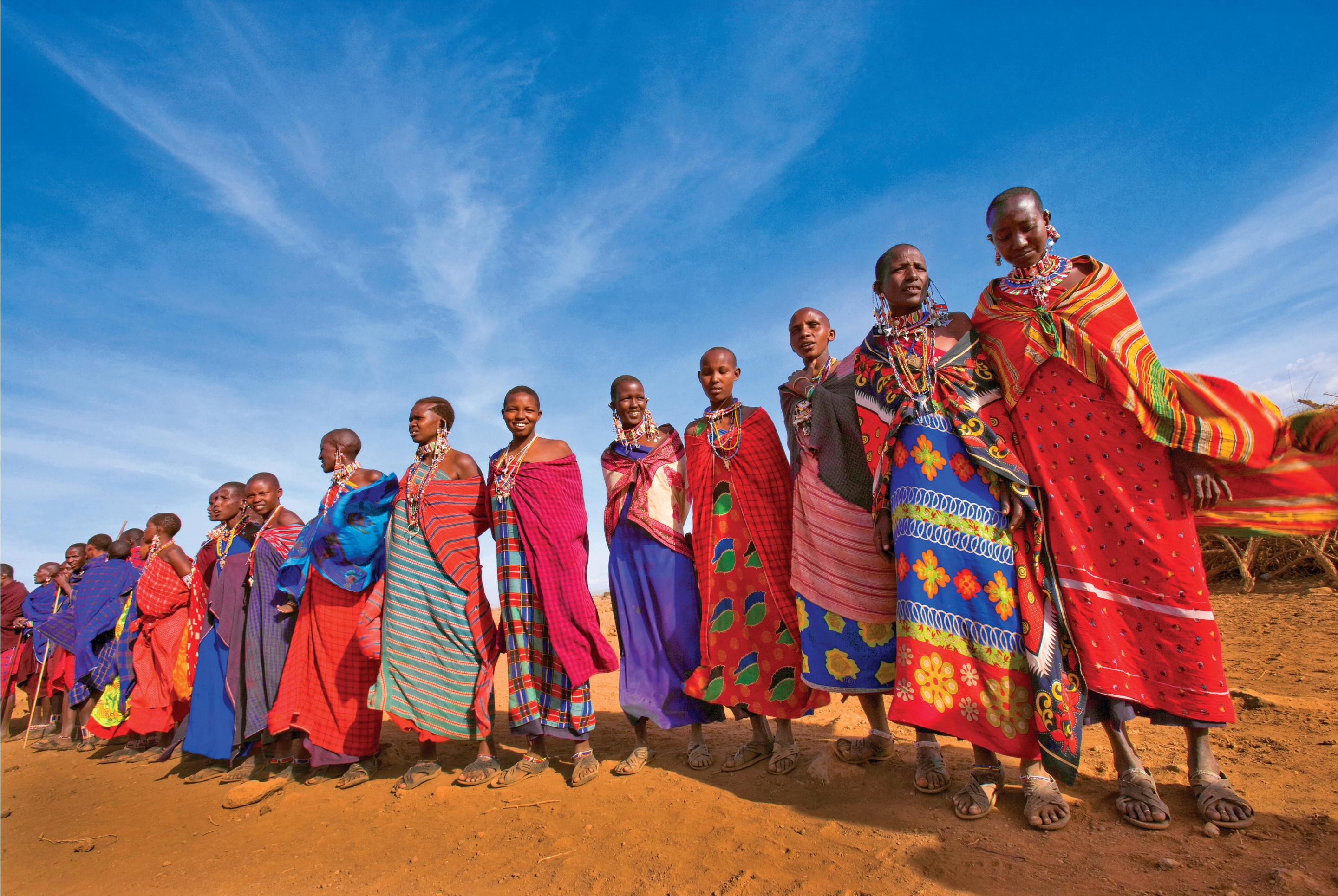You’re receiving this message because your web browser
is no longer supported
We recommend upgrading your browser—simply click the button below and follow the instructions that will appear. Updating will allow you to accept Terms and Conditions, make online payments, read our itineraries, and view Dates and Prices.
To get the best experience on our website, please consider using:
- Chrome
- Microsoft Edge
- Firefox
- Safari (for Mac or iPad Devices)
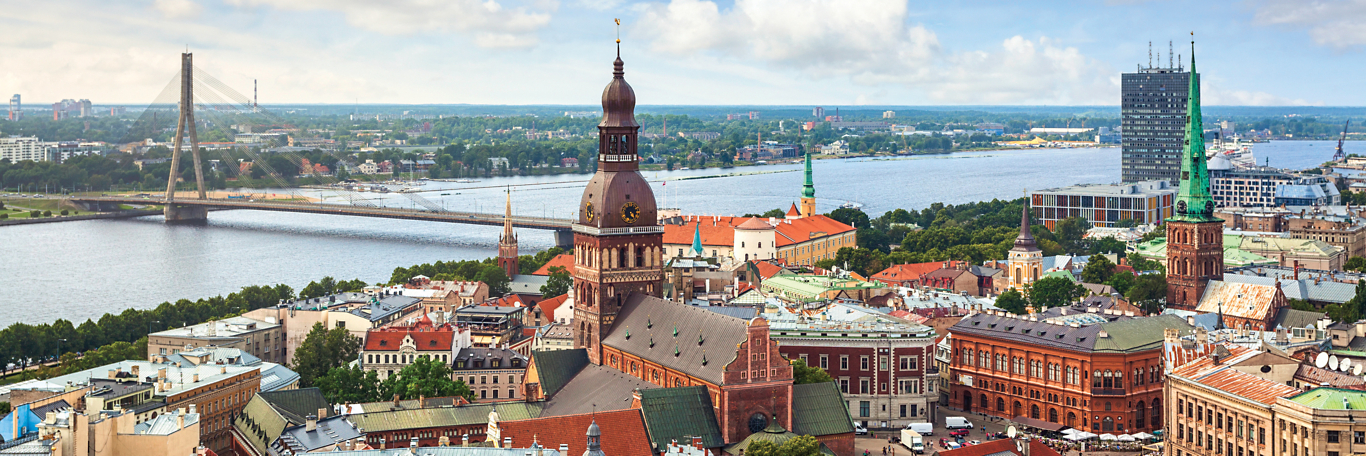
latvia
Compare Our Adventures
Click 'Select to Compare' to see a side-by-side comparison of up to adventures below—including
activity level, pricing, traveler excellence rating, trip highlights, and more
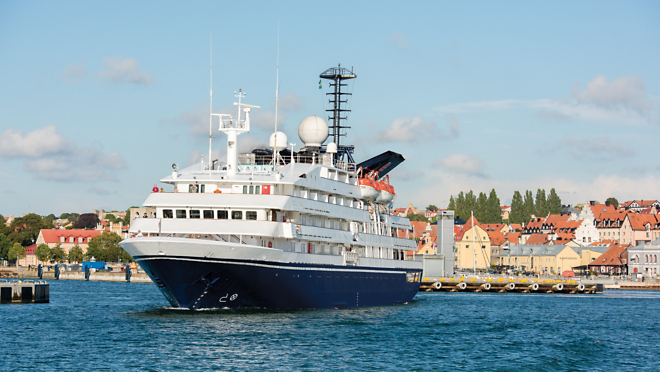
Spend 2 days in Latvia on
Grand Baltic Sea Voyage
O.A.T. Adventure by Small Ship

Spend 3 days in Latvia on
The Baltic Capitals
O.A.T. Adventure by Land
Spend 2 days in Latvia on our
Pre-trip Extension
Baltic Capitals: Riga, Latvia & Tallinn, Estonia
Baltic Capitals: Riga, Latvia & Tallinn, Estonia

Compare Adventures
Add Adventure
including international airfare
per day
*You must reserve the main trip to participate on this extension.
**This information is not currently available for this trip. Please check back soon.
You may compare up to Adventures at a time.
Would you like to compare your current selected trips?
Yes, View Adventure ComparisonLatvia: Month-By-Month
There are pros and cons to visiting a destination during any time of the year. Find out what you can expect during your ideal travel time, from weather and climate, to holidays, festivals, and more.
Latvia in December-February
While temperatures dip into the teens and daylight only lasts for a short amount of time in the winter months in Latvia, it's a magical time of year as the country is coated in a fresh blanket of snow. A glistening Daugava River freezes over in the winter, making it a popular spot for ice skating and ice fishing, and in Latvia's big cities, like Riga, you'll find several large open-air ice-skating rinks. A quieter activity that takes you away from the crowds but provides an equally enjoyable wintertime experience is cross-country skiing. Latvia is known for being geographically flat and boasting around 50% forest coverage—it is one of the European Union's most heavily forested states. These topographical features are ideal conditions for cross-country skiing.
Latvia isn't limited to outdoor sports—escape the cold and ring in the holiday spirit by attending a show at the ballet or opera. You can catch enchanting performances of The Nutcracker and Swan Lake in December through February, and the rest of the winter schedule is typically reserved for classics like Romeo & Juliet, Snow White and the Seven Dwarfs, and The Sound of Music.
Holidays & Events
- December: The Winter Solstice is celebrated with processions, singing, dancing, feasts, and rolling the yule log. The tradition of rolling the yule log is meant to ward off negative energy.
Must See
Winter in Latvia is an unparalleled experience—from the holiday festivities to the distinct local traditions. A highly unique experience in this region is watching the sun paint the sky as it sets at around 3:30 to 4:00 in the afternoon in December and January. Daylight hours last the shortest amount of time in the winter, so it's better to plan your day accordingly.
Even though the sun sets early, Riga comes alive with holiday cheer in December. It is believed that the world's first Christmas Tree was erected in the early 16th century in Riga, so the holidays are a particularly special time for the city where large, brightly lit and decorated trees stand as the centerpieces of every square. Christmas markets open, filling the crisp, cool air with the smell of gingerbread, the lively sound of Christmas music, and the jolly feeling of the holidays.
If you're looking for an authentic experience, the Latvian bath ritual may be for you. The bath ritual is meant to relieve you of stress and awaken your spirit. Those who wish to participate typically begin by relaxing in the warmth of a bathhouse or sauna. Once you're body is heated, you run out to a nearby pond to take a dip in the icy waters. After, you return to the bathhouse or sauna again and you continue this cycle.
Related Video:
Latvia in March-May
Spring is warmly welcomed in Latvia after months of frigid cold, and while the temperatures don't reach the 60s until late April and early May, a warm relief slowly arrives in March. The season also brings heavy rainfall, which typically results in the overflowing of rivers. But similar to winter, the locals make the best of these conditions by boating and canoeing on the flooded rivers.
Once the season truly awakens in May, the country springs to life with festivals and flowers. Throughout the season, beer gardens are popular spots to enjoy the springtime weather. Riga's Latvian Beer Festival, the largest festival of its kind in the Baltics, rings in the new season with around 200 local and foreign brews available for sampling. You can also see Riga in bloom at the National Botanic Garden where colorful magnolias and azaleas add splashes of color to the city.
Holidays & Events
- May 1: Labor Day
- May 4: While Independence Day is celebrated in November, May 4 marks Latvia's Restoration of Independence Day. Latvia initially gained its independence in 1918, but fell to the Soviet Union in 1940 and didn't regain its independence for another 50 years. This day commemorates the country's second claim on independence in 1990.
Related Video:
Latvia in June-August
When the weather warms up in June through August, it's no surprise that tourists flock to Latvia. Expect large crowds in the summer as this is a popular vacation spot for European travelers. But don't sweat the crowds—summer is still an ideal time to visit Latvia due to the pleasantly warm weather. Temperatures are comfortable and peak in the high 60s, but nighttime temperatures can slip into the 50s, so it's best to pack warm clothing along with your summer outfits. If the cold doesn't bother you though and you're feeling brave, you may want to take a dip in the Baltic Sea. The water temperature only reaches highs in the 70s during the summer.
Holidays & Events
- June 23: The Midsummer Solstice, known locally as Jāņi, is a celebration of nature.
- June-August: Summer is a popular season for festivals in Riga—from the Riga City Festival's concerts, gardens, and sporting events to the Summer Sound festival, which brings out the best local musicians and artists.
Must See
June through August offer highly unique and authentic views into Latvian culture. For example, Medieval Day at Cēsis Castle allows you to travel back to the Middle Ages for a glimpse of what life was like in the land of knights and castles. Medieval Day offers traditional cuisine, games for all ages, and festive music and dancing.
If music is more aligned with your interests, Latvia holds an annual Opera Festival every June. Spend a night at the opera and then meet the singers after the show. Or, you may want to take part in the festivities of the annual Latvian Song and Dance Festival, where you can discover local musicians, artists, and craftsmen. The Song and Dance Festival is a tradition that has carried on since the 19th century.
Related Video:
Latvia in September-November
With the arrival of autumn, tourist season winds down and the temperatures begin to drop again, making this a great time of year to visit Latvia. The fall colors are enough to draw you in to experience Latvia this season. Around half of the country is cloaked in forests, resulting in a fantastic display of warm orange, yellow, and red hues. Possibly the best places to view these colors are in Gauja National Park and the town of Sigulda where forests cover the majority of the landscape.
While autumn isn't the warmest season, September and October haven't completely cooled down and remain in the 50s. November begins to show true signs of winter approaching as the temperatures plummet into the 30s.
Holidays & Events
- November 18: On this day in 1918, after the conclusion of World War I, Latvia gained its independence from Russia and Germany.
Must See
A short drive from Gauja National park is the medieval town of Sigulda, where castles dot the land. Autumn is one of the best times to visit Sigulda because the dense forests surrounding the town turn vibrant hues of yellow and red. You can take in the autumn colors on foot during a hike or from above. Sigulda is known for its thrilling activities—from bungee jumping over the Gauja River to bobsledding through colorful forests.
Related Video:
Average Monthly Temperatures
High Temp Low Temp
Latvia Interactive Map
Click on map markers below to view information about top Latvia experiences
Click here to zoom in and out of this map
*Destinations shown on this map are approximations of exact locations
Riga
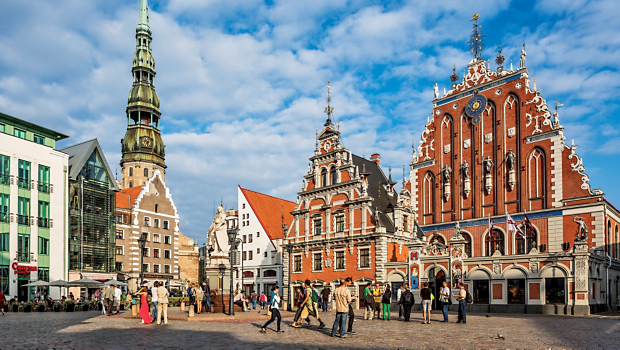
At the crossroads of Eastern and Northern Europe, Riga mixes medieval splendor with modern charm. This exciting metropolis—the largest in the Baltics, containing one-third of Latvia’s population—is a capital of art and architecture, famous for its Art Nouveau-lined boulevards and regal museums. So it’s no wonder why this gem of a city was so highly sought-after. Russia, Sweden, Lithuania, and Germany have all occupied Riga at one time or another in the city’s turbulent 800-year history. Latvia gained its independence from Russia in 1918 (although it was later occupied by Soviet Forces during the Second World War after which it gained full independence in 1991), and this victory is celebrated by the Freedom Monument in Bastekjalns Park.
The landscape of this historic port city is dominated by the proudly thrusting spires of Riga’s many churches and the Dauvaga River, whose smoothly flowing waters cleave the city in two before emptying into the Baltic Sea. St. Peter’s Church is perhaps Riga’s best-known landmark. A stunning example of 13th-century Gothic architecture, it is also the tallest church in the city. Nearby, roosters—the symbol of Riga—perch atop the spires of the Dome Cathedral. To get a sense of the many changes Riga has endured over the years, visit Riga Castle. Once the seat of power for foreign rulers, the castle has undergone numerous reconstructions and rebirths and is now home to the Latvian president.
Riga’s Old Town is a UNESCO World Heritage Site filled with charming cobblestone lanes and romantic rooftop vistas. Wander among the medieval architecture, soak up the atmosphere in a traditional beer garden in Livu Square, or step into a trendy restaurant to taste the experimental cuisine the region is famous for.
Explore Riga with O.A.T. on:
Salaspils Concentration Camp

Thirty minutes outside of Riga in a quiet pine forest is Salaspils, the largest concentration camp in the Baltics. Between 1941 and 1944, more than 12,000 prisoners were held here in what the Nazis classified as a “Police Prison and Work Education” camp. They were mainly left-wing Latvians, Soviet POWs, and a few thousand German Jews. Tragically, many of the camp’s youngest victims were subject to medical experimentation.
Today, visitors to the camp are met with a somber scene: pass under a large concrete bunker—engraved with the words “The earth groans behind this gate”—to enter the memorial site. A small exhibition inside the bunker recounts the horrors of the camp; beyond, the foundations of a few barracks and stone statues symbolizing hope and defiance are all that remain to mark the estimated 2,000 people who lost their lives here.
While Salaspils is not included on our itinerary, a visit to the camp is sure to be a powerful and moving experience for those who choose to visit during a free afternoon.
Explore Salaspils Concentration Camp with O.A.T. on:
Rundale Palace Museum

Visit Rundale Palace for a fabulous display of aristocratic excess. Built for the paramour of a Russian Empress, this sumptuous example of Baroque and Rococo architecture features lavishly decorated rooms and authentic period furniture. Don’t forget to look up: the ornately carved and painted ceilings—which reportedly took 14 years to restore—are a delightful addition to the palace’s opulent style.
Rundale was built in the mid-18th century by Francesco Bartolomeo Rastrelli, the architect better known for St. Petersburg’s colossal Winter Palace. Over the years, the palace passed through the hands of various Russian nobles until the First World War, when it was used as a hospital by the occupying German forces. After a brief stint as a school and a grain warehouse, Rundale was lovingly restored to its former glory in the 1970s.
Take a stroll through the formal French-style gardens which give Rundale the nickname “The Versailles of the Baltic.” An intricate maze of hedges and topiary extend across the palace grounds, while the impressive rose garden enchants visitors with its heady blooms.
Explore Rundale Palace Museum with O.A.T. on:
Featured Reading
Immerse yourself in Latvia with this selection of articles, recipes, and more
ARTICLE
Learn how Estonia, Latvia, and Lithuania came together to achieve independence from each other.
ARTICLE
When in Riga, look up. Learn about the Latvian capital’s famed Art Nouveau movement here.
Three Nations, One Spirit
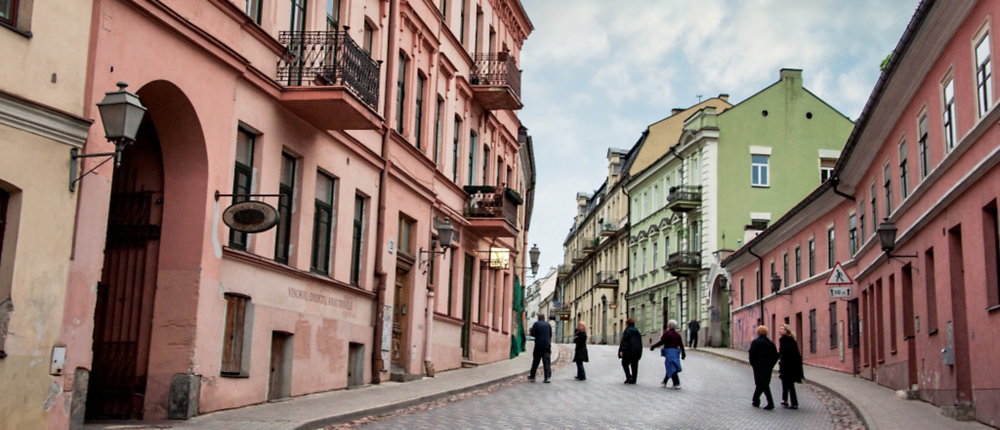
The seeds of protest and the Baltic Capitals’ resurgence
for O.A.T.
An estimated two million Baltic people all joined hands to physically and symbolically link their three capital cities of Vilnius, Riga, and Tallinn.
Eastern Europe may still seem closed off to many—after all, most of what Americans know about Estonia, Latvia, and Lithuania was associated with the Eastern Bloc. But while the Soviet shadow still lingers in the architecture and monuments, the flags raised in their capitals have changed to reflect national and ethnic identities. Regardless of the political affiliation of the countries, one fact remains steadfast: The Baltic people love their homeland, and they aren’t afraid to fight—or, in some cases sing—to protect their unique cultural and ethnic identities.
The “Singing Revolution:” Tallin’s peaceful protest
Between the years of 1987 and 1991, yearning to shake off the yoke of Soviet rule, the Baltic people began to engage in a series of public singing demonstrations—often chanting national anthems and cherished folk songs. Soviet officials discouraged these patriotic sing-alongs, wanting to unify disparate populations under the USSR umbrella. As these once-localized musical outbursts became larger and more fervent, the voices of the Baltic people echoed all the way to the highest offices of the Soviets.
On September 11, 1988, approximately 300,000 people gathered at the Tallin Song Festival Arena to sing national songs and hymns, while rock musicians supported and encouraged them onstage. More than a quarter of the entire Estonian population was in attendance—how’s that for unity? Song festivals continue to be popular across all three Baltic countries, beloved as a way to champion national identity and help preserve the past.
Chain of Freedom: peaceful protest or “nationalist hysteria”?
As it turned out, the Singing Revolution was only the beginning of a march towards democracy. On August 23, 1989, an estimated two million Baltic people all joined hands to physically and symbolically link their three capital cities of Vilnius, Lithuania; Riga, Latvia; and Tallinn, Estonia. This human chain—referred to as the “Baltic Way” or, more locally, “Chain of Freedom”—extended over a length that exceeded 400 miles. While this may sound like a feat straight out of the Guinness Book of World Records, the message was serious: It was an expression of joint solidarity against decades of Soviet rule. The year of the chain marked the 50th anniversary of the Molotov-Ribbentrop pact that annexed the Baltic States to the USSR. A growing number of activists, eager to bring the issue of illegal Soviet occupation to the world stage, organized the human chain.
Each state had its own pro-independence movement to help coordinate the effort: the Popular Front of Estonia (Rahvarinne), the Popular Front of Latvia (Latvijas Tautas Fronte), and the Reform Movement in Lithuania (Sajudis). Local support was encouraging; thousands of signatures had been gathered in multiple petitions, and organizers provided free bus transportation to ensure an unbroken chain in rural areas. Estonia declared the day to be a public holiday, and many businesses closed to allow employee participation. Aided by radio broadcasts to help organize the massive demonstration, the participants joined hands for 15 minutes.
Although it would take an additional two years of diplomatic and political victories, the Chain of Freedom was ultimately successful: Lithuania, Latvia, and Estonia were recognized as independent states by the end of 1991. Though freedom from Soviet control took over 50 years to attain, the citizens of these three nations adapted quickly to their hard-won liberties. The transformation of the neighborhood of Užupis in Vilnius demonstrates how the creativity and revolutionary spirit of the pro-national movements lives on in their current democratic states.
Užupis: The bohemian utopia
Located just one mile east of Vilnius University (the oldest in Lithuania), Užupis is an eccentric neighborhood that makes for a perfect detour during a free afternoon in Vilnius. In the native Lithuanian tongue, Užupis literally means “on the other side of the river.” In this case, the river in question is the Vilnia River. But a more familiar moniker could just as easily be “on the wrong side of the tracks.” Užupis was nearly deserted during World War II, when Nazi forces drove out the mostly Jewish population. For years, the empty buildings and abandoned storefronts became a haven for criminals, prostitutes, the homeless, and others that lived—some intentionally and others by circumstance—on the fringes of society.
Over the past several centuries, the population has shifted from medieval craftsmen to Jewish communities, but the bohemian spirit of the neighborhood is forever sealed in the DNA of the colorful, dilapidated buildings. Nowadays, Užupis is populated by a new mix of lifestyles: students living cheaply, artists seeking inspiration, and the free spirits who balk at the idea of living in the more “respectable” capital city of Vilnius. The muses of art, craftsmanship, and self-reliance still seem to haunt these streets.
In the place where a former statue of Lenin once stood watch over the town, a new icon has emerged, one that is far more fitting for the artistic and eclectic population: Frank Zappa, the American musician, composer, and kindred free spirit.
The Baltic Capitals' Resurgence
Rhapsody in Blue

The many faces of Art Nouveau stun in Riga
by Tom Mashberg, for O.A.T.
As you stroll the streets of Riga, Latvia’s cosmopolitan capital near the Baltic Sea, be prepared to look up. Some of the most fanciful faces in all of Europe will gaze back at you. They might be silent and serene; or screaming, horrified, and hollow-eyed; or ecstatic and full of merriment. You’ll spot women decked out in intricate Egyptian headdresses, and young ladies who sport bejeweled headbands like showgirls in the Roaring Twenties. As for the men, it’s all ferocious manes and flaring nostrils, swirling Zeus-like beards, and headpieces befitting King Tut and his fellow pharaohs. If it seems like they’re scowling, don’t take it personally: Riga is welcoming you.
These faces, numbering in the thousands and known as mascarons, decorate the 800 or so buildings in Riga that were constructed in the Art Nouveau style. Riga, a city of 700,000 people, is the widely recognized epicenter of that theatrical approach to design and architecture, which swept Europe from 1890 until about 1910. Art Nouveau, as its name suggests, was a fresh, youthful movement in sculpture, building design, and decorative arts that sought to embellish homes, household items, and utilitarian objects with all manner of decorative flair. It might have been a ten-story grand hotel, a table lamp, or even something as mundane as a soup ladle. The practitioners of the genre found a way to give each piece elaborate contours, countless flourishes, and a unique sense of vibrancy.
At its zenith, Art Nouveau in Riga and cities like Paris, Munich, and Stockholm grew more and more ornate, intricate, and overwrought; the movement fell out of favor as the world entered the tumult of World War I. But its brief epoch left behind creations with timeless appeal. These architectural masterpieces are characterized by their many supple curves, soft waves, and flowing lines, and by the juxtaposition of mythological figures, like the snake-haired Medusa, with contemporary human faces. Its artists often took their inspiration from sinuous plant and sleek animal forms. Art Nouveau landmarks in Riga include variations on the school that came to be known as the lily, eel, noodle, floral, and wave styles.
Street smarts
Architecture was at the heart of the Art Nouveau movement, and given Riga’s abundance and variety of buildings, UNESCO declared the Latvian capital’s historic center a World Heritage Site in 1997. According to the United Nations, the city “has the finest collection of Art Nouveau buildings in Europe,” yet still “retains its medieval fabric relatively intact.” Riga’s pride in its edifices is boundless. Exteriors and interiors are lovingly cleaned, restored, and preserved, and every detail is being photographed and catalogued for a comprehensive databank. As the UN said, “the quality and quantity are unparalleled anywhere in the world.” City officials consider safeguarding this heritage a priority at a time when Riga is experiencing a commercial and residential construction boom.
What to see? Gems abound, particularly on one of the city’s premier byways: Elizabetes Street. The apartment building known simply as 10B features a feast of ornamentation—masks, peacocks, sculptured heads, and geometric figures at the top of its façade, with sky-blue ceramic tiles offsetting the clean white stone and plaster. The roof is famed for its enormous sculpted face of a woman who resembles an heiress straight out of The Great Gatsby, her face slightly hidden and surrounded by peacock feathers.
Nearby, at Alberta Street No. 8, the visuals are more severe. This building has a wealth of design elements, but little softness or humor. Its most ornate aspect is its sturdy central projection, which is meant to represent an old and immovable tree. At the top, a lion’s head stands guard, roaring out a warning to trespassers. The rest of the façade is divided into pilasters decorated with pretty, yet solemn, female faces. The windows are adorned with reliefs depicting unearthly monsters with furrowed brows, whose role is to protect inhabitants from evil interlopers.
At Alberta Street 2A sits one of the last and most eclectically decorated Art Nouveau buildings built in Riga, and it is a great example of the often-used Egyptian motif. There are two sphinxes at the entrance, symbolizing the sun and security. Two sculptures of gowned women with torches in hand stand above both sides of the entrance. The façade is accented with bands of glazed red tiles. The building’s rooftop features ornamental apertures intended to let in light.
Journey back in time
About 40 percent of buildings in the center of the city belong to the Art Nouveau school, which the Latvians called Jugendstil, meaning roughly “young style.” Latvian artists and artisans were first recognized and appreciated across Europe because of their spirited embrace of the movement. At the time, Riga was growing and gaining respectability as a seafaring center for commerce and tourism, and the sides and tops of many new buildings overflowed with cornices featuring obelisks, sphinxes, lions, vases filled with flowers, bowls filled with fruits, and other items meant to celebrate the city’s growing prosperity and sense of confidence.
So how does a traveler get oriented? The Art Nouveau Museum, on Alberta Street, gives visitors a chance to immerse themselves in the history of the movement before setting off for a stroll. Built by Riga’s most prominent architect, Konstantins Peksens, and renovated in 2009, it offers an intimate look at the 1903 household of the architect’s well-to-do family. Its centerpiece is its dizzying spiral staircase, with a finely wrought iron balustrade and a curved wooden handrail. A glance upward shows that it leads to a dazzling circular ceiling mural featuring geometric patterns painted using shades of orange, brown, and gold.
Tour guides dressed in period clothing lead visitors into rooms filled with original decorative elements. A sitting room features a stucco ceiling molded with daisies and roses, stenciled walls, and an airy, finely carved doorway frame leading to a bay window. The fireplace room shows off floral textures inspired by the diversity of trees and plants in Riga, including an ornamental frieze with chestnut leaf motifs. The ceiling is thick with stucco decor and its centerpiece is a large geometrical rosette. There are original parquet floors and small decorative items made in the translucent reds and light greens favored by period artisans.
Movement masterminds
Peksens, who lived in the building, was one of the greatest of the Art Nouveau architects. He was born in 1859, and owned a plumbing business when he started designing his earliest buildings. He soon became a master of the style and a mentor to younger building designers. He taught them that the structure’s form needed to be in harmony with its function. The decor, embellishments, and sculptural flourishes should not interfere with what went on inside.
Among his masterworks are buildings on Smilsu and Strelnieku streets. The first showcases a bearded man and a tall, curvaceous female form; they stand about six feet apart, holding up a pediment ornamented with vines and tree branches. Many say they are the finest of the city’s building sculptures, and natives have dubbed the woman Miss Riga. The second building features a large, complex square frieze that seems to blend Art Nouveau with Gothic elements. Its two pillars, one on either side, are topped by ghastly, shrieking heads that bring to mind the gargoyles of Notre-Dame Cathedral. The centerpiece is a gracious face delicately encircled by a multitude of rounded carvings. The figure wears a seven-pronged crown that suggests the rays of the sun as well as a crown of thorns.
Groundswell
So much to see so far above street level means visitors will be craning their necks more than normal. A set of binoculars may be something you should add to your packing list. There are also several restaurants and shops installed on the ground floors of Riga’s Art Nouveau buildings, and their interiors try to do justice to the style. The building at Alberta 13, for example, is covered with sculptural reliefs of dragons, screaming faces, snakes, flowers, heads of knights, and dozens of theatre-style masks that display a panoply of emotions. Its restaurant, called simply Alberta 13, is vast and airy and far less garish than the exterior. It features purple banquettes embroidered with flowing vines, simple moldings patterned after plants, and modest wall carvings. It is a bit of a relief after the intensity of the surrounding structures.
Many who tour Riga’s Old Town make an effort to visit what is known locally as the House of the Cat, at 10 Meistaru Street. The building, painted in yellow and dark green, has the aesthetic of a medieval castle, with two pointed turrets. It was built as a blend of Medieval and Art Nouveau architecture, and is famous for the large metal sculptures of two angry cats, their backs arched and tails raised, that stand hissing atop its tallest points. Legend has it that the wealthy tradesman who commissioned the building had a falling-out with the city’s trade guild and had the cats placed there to show his contempt for his colleagues.
No matter what the truth behind the legend, the result is a universal favorite, a gem in a crown of many jewels that lace historic Riga and encircle its place in architectural history.
The many faces of Art Nouveau stun in Riga
Traveler Photos & Videos
View photos and videos submitted by fellow travelers from our Latvia adventures. Share your own travel photos »
